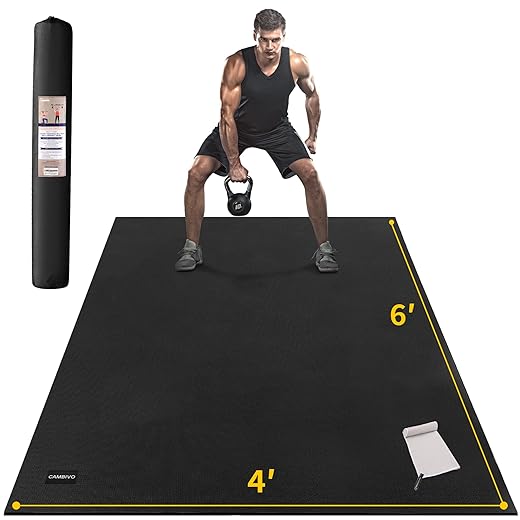This step-by-step guide on “How to Gradually Increase the Number of Jump Rope Jumps” provides a structured approach to improving your jump rope skills while enhancing cardiovascular fitness, coordination, and endurance. Beginning with a solid warm-up, the guide emphasizes the importance of starting with manageable jump counts and progressively increasing them over time to prevent fatigue and injury. It includes tips on maintaining proper form, incorporating rest periods, and tracking your progress. By following this plan, you’ll build stamina and technique safely, leading to improved performance and confidence in your jump rope workouts.



Assess Your Current Ability
Count how many jumps you can perform in one go without stopping. Start by finding a suitable space where you can jump freely. Once you’re ready, start jumping. Track each jump until you must take a break. For example, if you can manage 20 consecutive jumps, this number will be your baseline. This baseline is crucial as it will help you measure your progress in future workouts. Remember to record your count in a journal or app, so you can easily refer to it.
If you’re curious about the long-term impact of this routine, check out What Happens to Your Health When You Jump Rope Daily — you’ll discover how consistent jumping transforms your stamina, heart health, and coordination.


Set a Realistic Goal
To assess your jumping ability, track how many jumps you can complete in one session. Determine a timeframe that feels realistic for you, such as one month or three months. Set a specific, challenging, and achievable goal. For example, increase your jumps by a certain percentage or reach a specific number. Write down this goal. Then, make a step-by-step plan. It should gradually increase your jumping practice. This will keep you motivated and on track.
For guidance on structuring your training effectively, explore How to Incorporate Jump Rope into Your Fitness Routine. This post breaks down how to mix jump rope with strength and cardio sessions for balanced results.
Establish a Jump Rope Routine
Set a specific time each week for your jump rope sessions. Aim for at least 3-4 times a week to effectively build your endurance.
Start with Short Intervals
Start your training by jumping for short intervals of 30 seconds to 1 minute. Focus on your technique: keep your core engaged, landing softly on the balls of your feet. After each jump interval, take a rest period of 1 to 2 minutes to recover fully. Repeat this process several times, ensuring that your form remains consistent throughout the workout.
If you’re upgrading your equipment, consider the Adjustable Speed Jump Rope with Foam Handles. Its ergonomic grip and adjustable design make it ideal for improving speed and comfort as your skill level grows.
Increase Jump Duration Gradually
Start by timing your current jump intervals and note how long you can jump comfortably without fatigue.
This gradual approach helps build endurance and strength, allowing you to enjoy longer jumping sessions with improved performance.
Incorporate Rest Days
Schedule at least one or two rest days each week in your routine to allow your muscles to recover. Listen to your body and adjust the number of rest days if you feel fatigued or sore. Incorporate active recovery activities, such as gentle stretching or walking, on these days to keep your blood circulation flowing while giving your muscles a break. Prioritize hydration, nutrition, and adequate sleep on rest days to support your recovery process and enhance your overall performance.
Add Variety to Your Jumps
Explore different jump rope techniques to elevate your workouts and avoid monotony. Start with single-leg jumps by lifting one foot off the ground and using the other to jump over the rope. Alternate between legs every 10 jumps to work different muscle groups and improve balance. Try alternate foot jumps next: keep a steady rhythm, bouncing on one foot and then the other, as if you’re jogging in place while skipping the rope. This keeps your heart rate up and challenges your coordination!
Monitor Your Progress
Log your jump sessions. Record each jump’s details. Include the total number of jumps and the practice duration. For example, note down “Day 1: 15 jumps for 20 minutes” or “Day 2: 20 jumps for 25 minutes.” Review this log weekly. It will help you spot trends, like improved endurance or consistency. This will allow you to adjust your training as needed. This simple practice will motivate you. It will also show your progress over time.
Adjust Goals as Needed
Reassess your jumping ability regularly. Track your jump counts and note any improvements.
Maintain this cycle of assessment and adjustment to continuously improve your jump performance. You can also deepen your understanding of jump mechanics and endurance by reading The Science Behind Jump Roping and Running Performance. It explores how jump rope training enhances cardiovascular strength, coordination, and running efficiency.
Achieving Your Jump Rope Goals
In conclusion, gradually increasing your jump rope jumps is entirely achievable with the right approach. By focusing on consistency and being patient with your progress, you’ll not only enhance your endurance and technique but also enjoy the journey of improvement. Remember to listen to your body and make adjustments as needed, and before you know it, you’ll be jumping higher and longer than you ever thought possible. Happy jumping!
Essential Gear Needed
Master Your Jumps
Determining the Right Number of Jumps for Your Fitness Goals
By following these tips, you’ll be on your way to mastering the jump rope in no time! Happy jumping!
Determining the Right Number of Jumps for You
Yes, there are different guidelines for endurance jumping versus high-intensity intervals because they cater to distinct training goals and physiological demands.
Endurance jumping is lower intensity but sustained over a longer duration. The focus is on building stamina and muscle endurance. The training guidelines may include longer sets with lower reps. They allow for longer rest periods to recover while keeping a steady heart rate.
High-intensity intervals involve short bursts of effort, then brief recoveries. This type of training aims to improve power, speed, and anaerobic capacity. The guidelines often include shorter intervals with higher repetitions. The work periods are usually much more intense, pushing you close to your max effort.
In summary, while both types of training can be beneficial, the guidelines differ significantly in terms of intensity, duration, and rest intervals based on your specific fitness goals. Adjusting your training approach according to these differences can help you achieve the best results in your fitness journey!


















I think the guide is solid, but I disagree about incorporating rest days. For me, every other day works better. I feel like I lose momentum otherwise. Anyone else feel the same?
I appreciate your perspective! Everyone’s body responds differently to exercise routines, so there’s no one-size-fits-all approach. It’s all about finding what works best for you!
That’s a great idea! Mixing in HIIT can definitely keep your workouts fresh and challenging. Thanks for sharing your variation! Keep it up!
Hey everyone! I started using this guide a while back, but I adapted it by adding some HIIT intervals to my routine. So, instead of just jumping for a set time, I mix in sprinting and jumping rope in bursts. It keeps things exciting and really ramps up my heart rate! Anyone else tried mixing things up like that?
I’ve been jump roping for a few months now, and I can’t believe how much my stamina has improved! I started with just 30 seconds of jumping, and now I can go for 5 minutes straight. It’s all about consistency, folks! Just stick to it!
That’s inspiring! It’s amazing to hear how far you’ve come. Consistency is key, and your success story could motivate others! Keep challenging yourself!
I know I should be incorporating rest days, but I just can’t help myself! Any tips for making those days feel productive while still letting my body recover?
That’s a common struggle! Consider doing light stretching or yoga on rest days. It keeps you active without overdoing it. Plus, it helps with recovery!
I’ve been following this guide for a few weeks, and I can already see changes in my endurance! I started at 50 jumps and now I’m up to 200! Just remember to listen to your body and take it slow. You got this!
That’s awesome progress! Listening to your body is so important, and it’s clear you’re on the right track. Keep us posted on your journey!
Is anyone else struggling with the rest days? I feel guilty if I don’t jump every day, but I know I need to recover. How do you all handle that mental block?
It’s completely normal to feel that way! Rest days are crucial, and they actually help in your overall progress. Try to think of them as part of your training. Your body will thank you!
Does anyone have advanced tips for jump roping? I want to start learning tricks like criss-cross and double-unders. Any suggestions on how to incorporate that without losing my stamina?
Absolutely! Once you feel comfortable with your basic jumps, you can start incorporating those tricks gradually. Focus on mastering one at a time, and don’t forget to practice them during your rest intervals!
I think it would be awesome to include tips on choosing the right jump rope. Maybe some recommendations for those who are just starting out? Like, should we go for weighted ropes or speed ropes?
Great suggestion! The type of jump rope can really make a difference. I’ll definitely consider adding a section on that in future updates. Thanks!